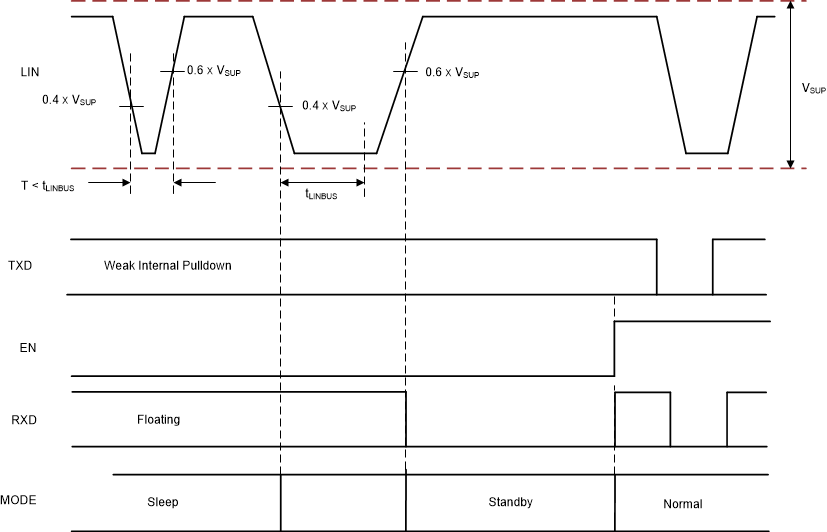SLLA383A February 2018 – August 2022 SN65HVDA100-Q1 , SN65HVDA195-Q1 , TLIN1022-Q1 , TLIN1029-Q1 , TLIN2022-Q1 , TLIN2029-Q1 , TMS320F28P550SG , TMS320F28P550SJ , TMS320F28P559SG-Q1 , TMS320F28P559SJ-Q1
5.2.2 LIN Wakeup
LIN wakeup is a request made on the LIN bus while the transceiver is in Sleep mode. This request is a specific pattern that the transceiver detects while monitoring the bus in the low-power mode. The pattern is a recessive-to-dominant transition where the dominant position is held for the specified amount of time. When the dominant pulse is held for the correct amount of time, the LIN transceiver transitions into Standby mode, and RXD is held low. Figure 5-1 shows a timing diagram of the procedure.
 Figure 5-1 LIN Wake-up Pattern
Figure 5-1 LIN Wake-up Pattern